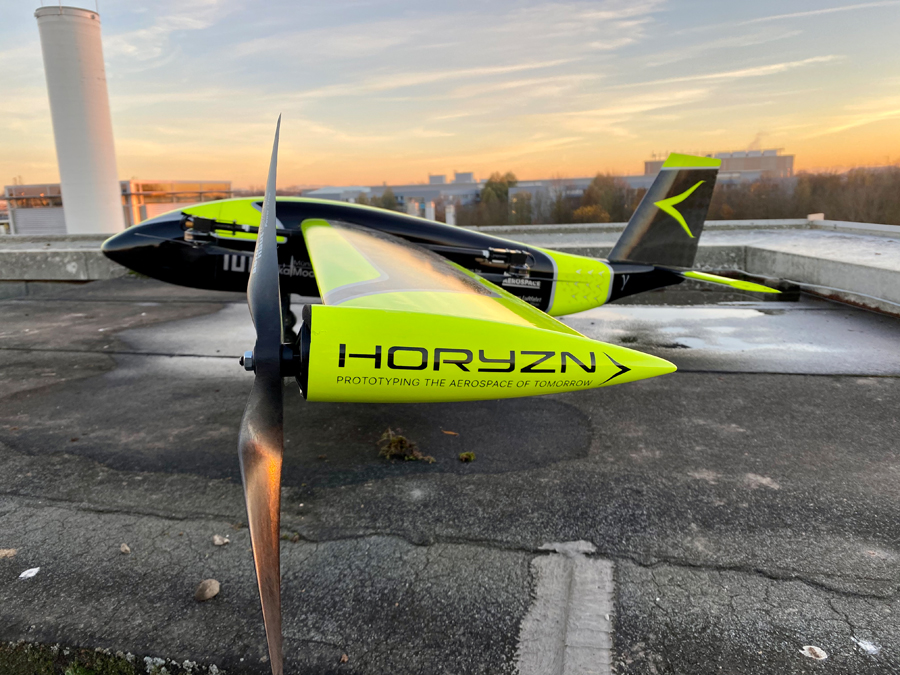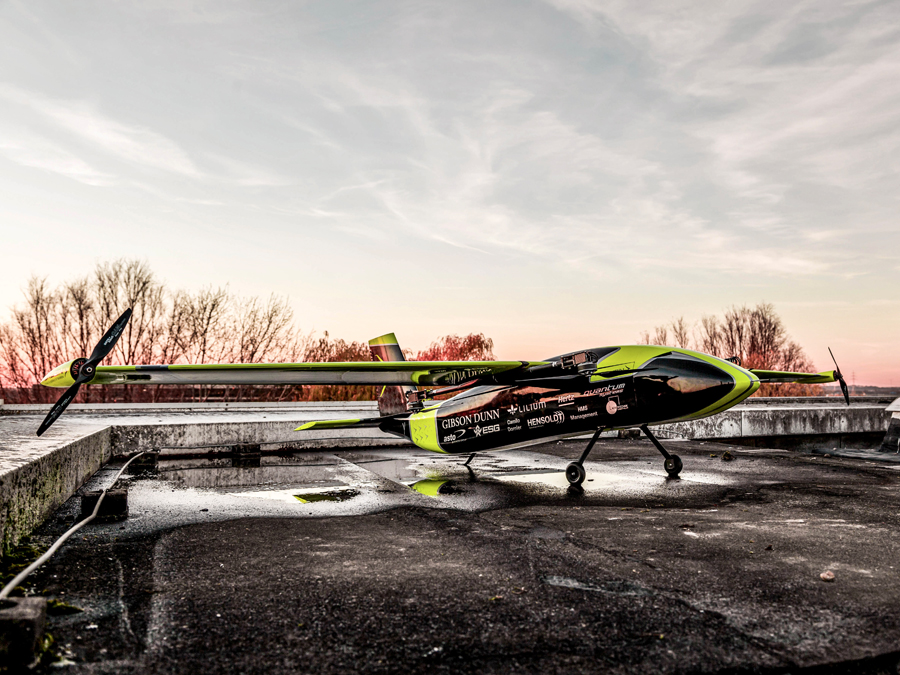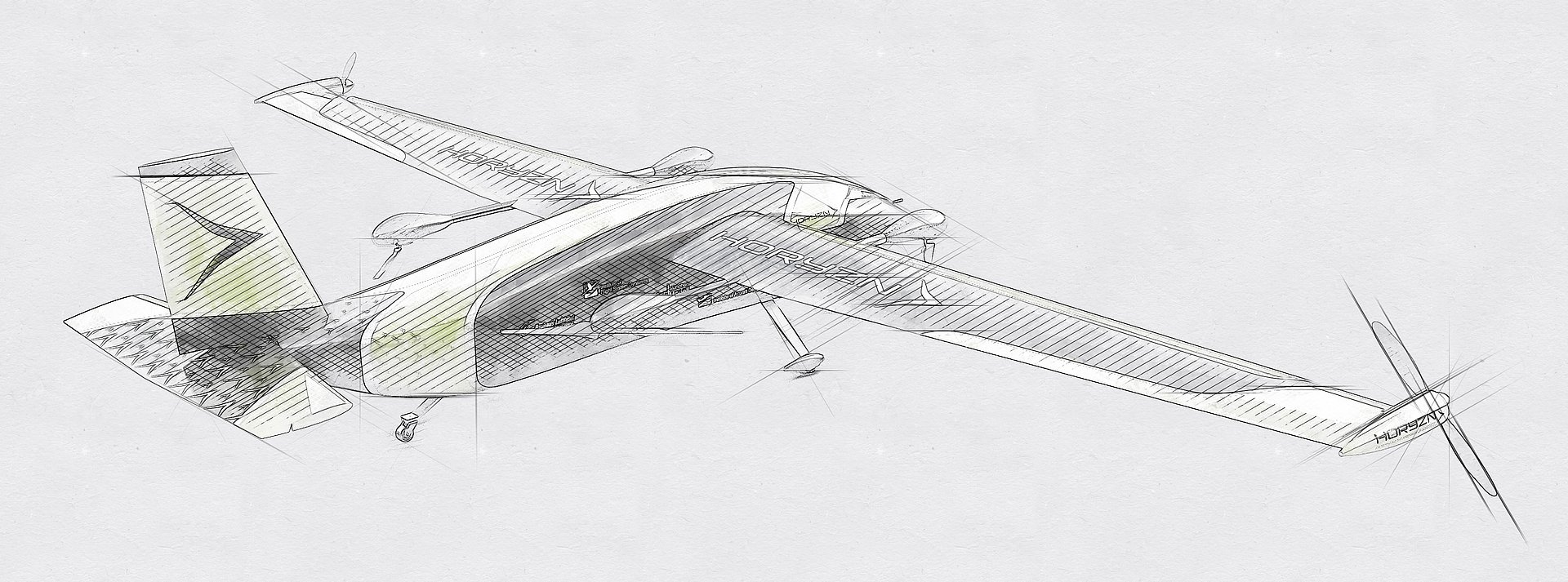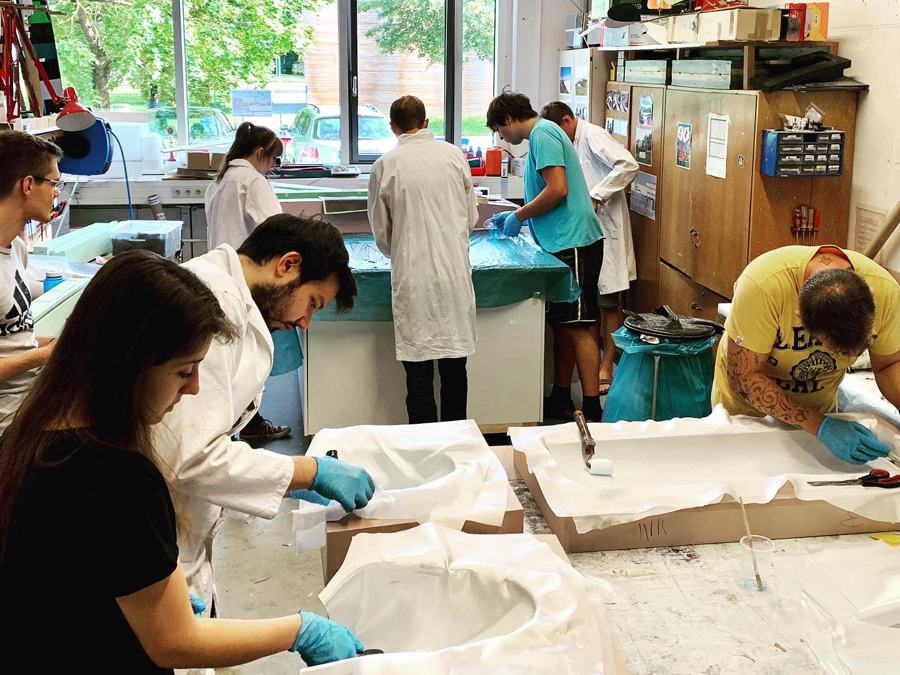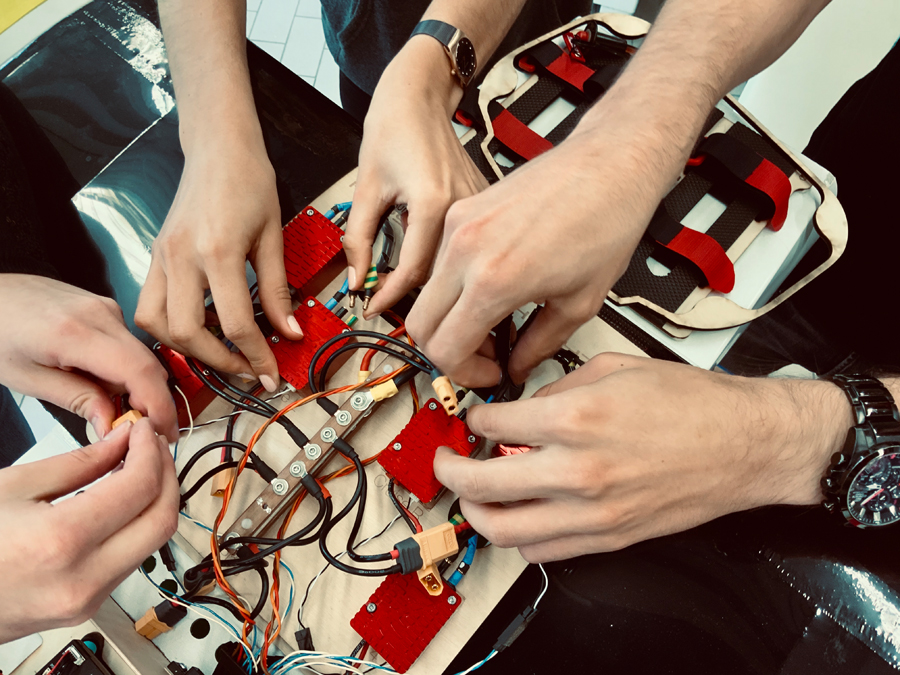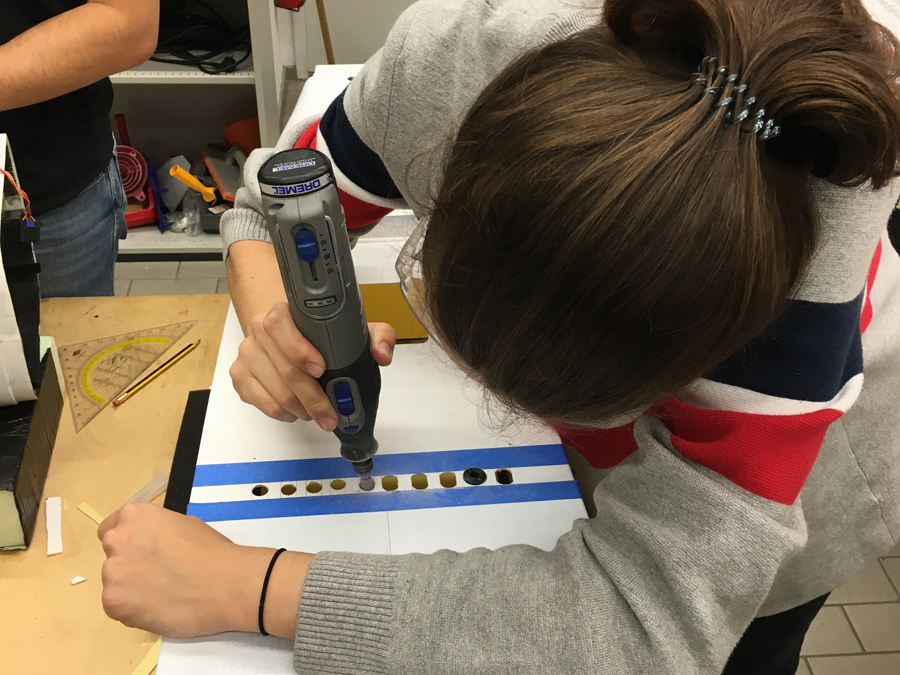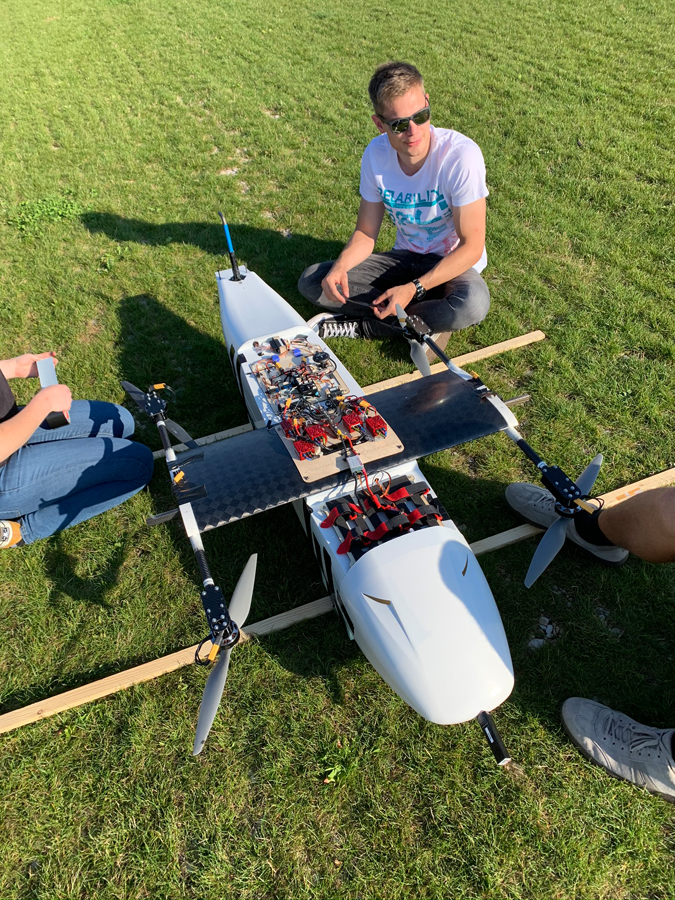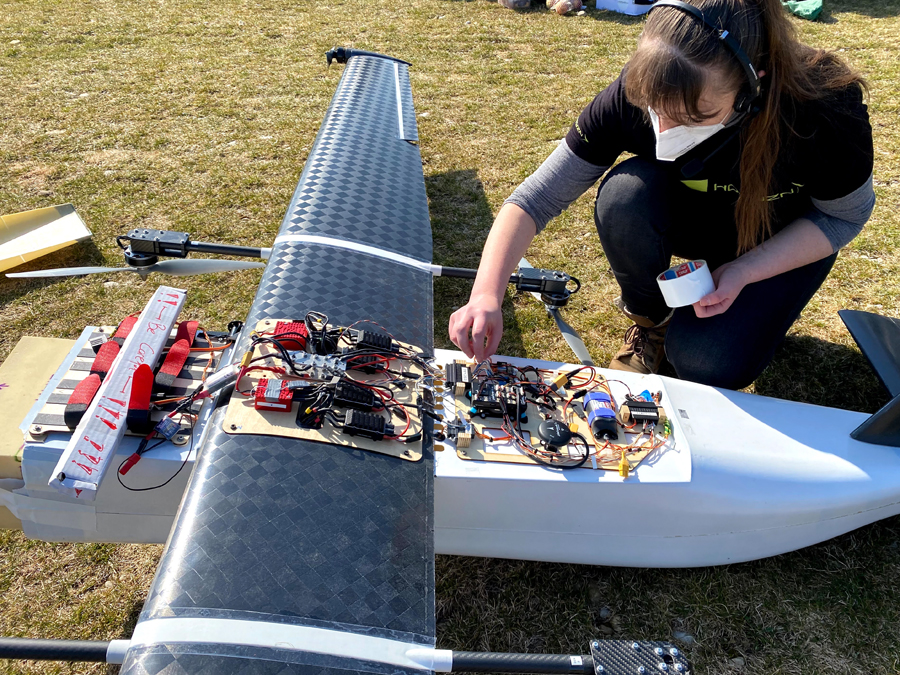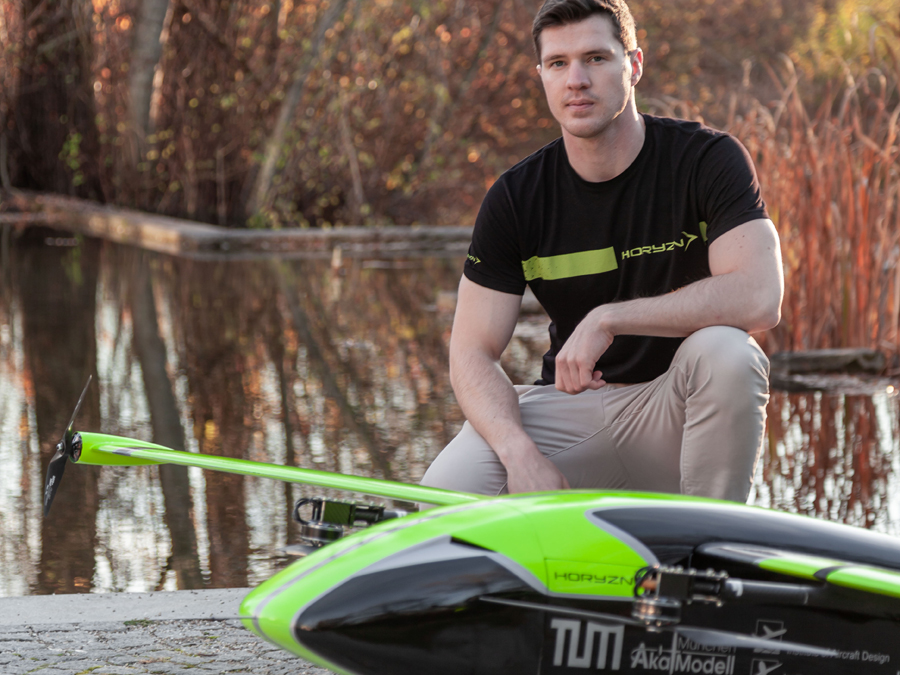A fixed-wing aircraft to transport a defibrillator
Taking off together
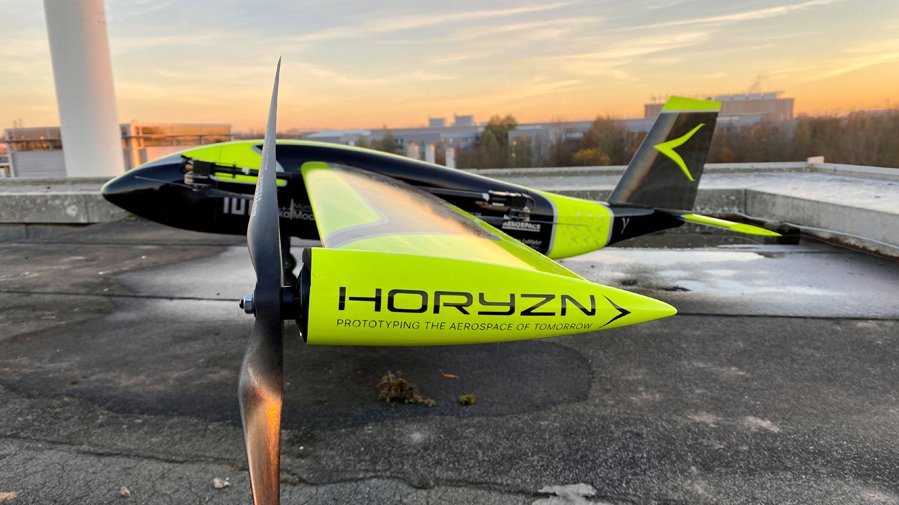
"No one wanted to give up. When the lockdown came, we all agreed that we had to continue somehow," Sonja Dluhosch recalls. The future industrial engineer joined the Horyzn group of the TUM Faculty of Aeronautics, Astronautics and Geodesy in January 2020.
"I had just met all the team members when the Corona pandemic started. No one knew if it would be possible to finish the prototypes of the 'Silencio' drone." The workshops at TUM were closed, and sponsors dropped out. Team meetings with 25 participants were no longer possible, nor were spontaneous meetings and discussions over afternoon coffee or after-work beers. The project was on the brink of collapse.
Largest fixed-wing aircraft in TUM history
"In order to continue, we first had to find new forms of communication. That wasn't easy," says Balazs Nagy, who founded the group in 2019.
"The main motivation was, of course, the goal of building the largest flyable unmanned fixed-wing aircraft in TUM history. But team spirit was at least as important: We are a very diverse group. Currently, our working group consists of 59 students – 16 female and 43 male – from 21 countries and eight different TUM faculties. The diversity allows for intercultural experiences and friendships that no one wants to miss out on."
No credits, no exams
Many group members, like Balazs Nagy, have been with the group since it was founded. Participation is absolutely voluntary; there are no credit points, but also no exams. Everyone can contribute and apply the theoretical knowledge they learned in their studies, or – if things go wrong and the drone crashes – learn from their mistakes.
The group survived the pandemic, thanks to countless meeting via Zoom and Teams. The concept and design of the new drone were discussed virtually, and quiz evenings and beer tastings were held.
Maiden flight of the "Silencio Gamma"
When the workshops reopened last summer, for up to five people, the group organized shift work to complete the "Silencio Gamma" – a drone with wings on top of which there are four rotors for vertical takeoff. The rotors for forward flight are attached to the wing tips. In September 2020, the unmanned electric aircraft completed its maiden flight on the airfield of the Chair of Aerospace Systems in Garching.
Seven members of the team were there – keeping a safe distance to each other, of course. The new Horyzn team for 2020/21 came together at the beginning of the winter semester. The goal for this year: the development of an electric motor-driven drone that can carry a defibrillator to where it is needed quickly and safely. With the "Mission Pulse" project, the students aim to close supply bottlenecks in rural areas.
Speed of 120 km/h
At the moment, it often takes too long for rescue services to reach a patient with cardiovascular arrest. The project is scheduled to start in April. "For the task of designing the drone, we used our experience from the past – but the new project is a completely different story in terms of complexity," Balazs Nagy emphasizes.
The demands towards the new drone – again a vertical takeoff fixed-wing aircraft – are high: it is supposed to fly at up to 120 km/h, because every minute counts when a defibrillator is needed to reanimate someone. Since the rescue operation will require the drone to fly over inhabited areas, HORYZN needs an official flight permit for the test flights.
In order to increase safety, the control software serves to avoid crashes or collisions with other users of the airspace. There is also a parachute system that prevents an uncontrolled fall in the case of an emergency, ensuring a soft landing.
A defibrillator for rescue operations
All these solutions have to be developed and implemented – and "Mission Puls" is scheduled to begin at the end of the year: In a simulated rescue operation, the drone will bring the defibrillator to the scene of the incident and then lower it to a first aider via a winch.
At the beginning of the next winter semester, Horyzn is supposed to go into the third round. The goal of the next mission is still open. "There is only one thing that is certain: we want to continue," emphasizes Sonja Dluhosch of the Business & Certification Team: "I can't think of a better project to take on responsibility and gain experience in an international and interdisciplinary team. This is an ideal preparation for professional life."
More information:
horyzn.org
